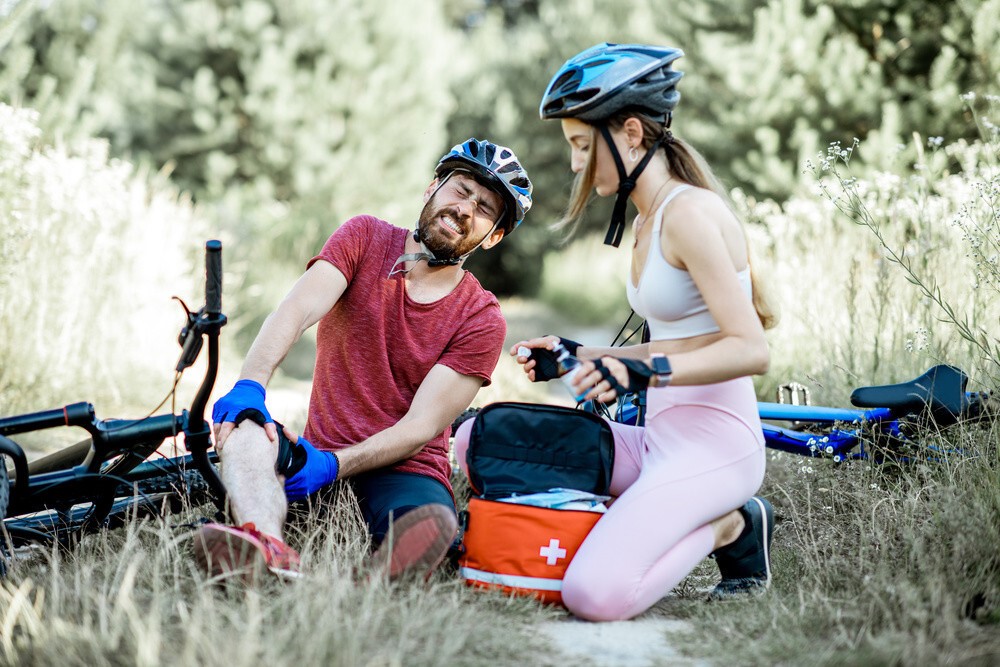If you didn’t learn to ride a bike in your childhood, you’re not still late and alone. Never let stupid misconceptions fool you. We’ll guide you to get you rolling on two wheels here in this blog. So, if you really want to know how to ride a bicycle for the first time, wholly reading the below steps is recommended.
Before diving into the steps, keep the below things in mind:
1. Keep Patience
Learning cycling should never be done in a hurry. You may become frustrated or tired, give yourself time, and
come back later. Focus more on practice sessions and do not try to do them all at once.
2. Don’t Give Up
You may not learn pedaling instantly but with continuous practice, it will be easier over time. So, never give up.
How to Ride a Bicycle for the First Time?
Step 1: Get Ready
Find the right bike fit
A proper fit is what you will be able to straddle flat on the ground with your feet with and your crotch should be
two inches above the frame. A comfortable bike should be easy to control and steer.
Ensure a proper fit helmet
A proper fit helmet refers to something that is snug but not too tight and sits level over your head. The front edge
of your helmet should be one inch or less above your eyebrows to keep your forehead protected.
Lower the seat
Make sure that you can sit upright with your feet flat on the ground. Adults who want to learn to ride bikes remain
scared of falling. The ability to put the feet on the ground can help build confidence.
Go to a flat open space
Look for a paved space that is large and flat similar to a parking lot to start. Grassy areas should be avoided as
they are not great to get enough speed for learning glide and coast.
Step 2: Learn the Basics
Learn getting on/off
After setting up your bike, it’s time to learn to get on and off. Lean your bike toward you standing on one side of
the bike for easier straddling. Keep trying this until you feel comfortable.
Learn to break
Take off your bike and practice hand brakes to get an idea of how much pressure is needed to stop or slow
down. Squeeze the brakes while walking alongside your bike to slow it down. Don’t forget to squeeze both the
front and rear brake at a time. Keep practicing every 20 feet to make sure you can do it smoothly.
Learn to coast
Well, it’s time to get on the bike and to try to coast without pedaling. Firstly, sit on your bike and move forward
with small steps. Now take longer strides to reach more than 1 foot forward just like you’re running. Do this
several times.
When you get comfortable with the steps, increase your speed and try to pick your feet up, no matter if it’s for a
second or two. Opt for longer stretches to easily pick feet up and better balance on the bike. Remember- speed
going allows you to balance much easier.
When you’re learning to coast for a long time, try to turn left or right. Also, try to make wide turns in both
directions.
Steering tips:
- Look up and forward to your destination
- Your body should be in an upright position
- Instantly place your feet on the ground if needed
Learn to pedal
Once you’ve mastered steering and balancing your bike for a longer period of time, now put the pedals back on
it. Still, keep the seat in a position so that you can touch the ground with your feet. Well, let’s dive into the
process of moving the bike from a stable position.
Firstly, sit on your bike and put your left foot flat on the ground and the other foot on the pedal that is raised at
the 1 or 2 o’clock position to get enough momentum. Now press the right pedal to give your bike a forward
momentum.
You can also start with a scooter step instead. Use one of your feet to scoot as you do in a scooter. Once you get
some speed, press the second pedal. Once you get the basics, you’ll be able to get forward momentum in many
ways. Never look down at the pedals that can throw off your balance.
Learn turning and steering
Once you master pedaling a bike with proper balance for a while, it’s time to practice steering and turning. Try to
draw big figure eights. Also, practice smaller turns. Remember- do not pedal while making a turn to ensure
enough control. Start pedaling again after coming out of the turn.
Hopefully, this blog has helped you learn the basics. Riding a bike takes time and you won’t master it in one day.
The more you practice the smoother you’ll be pedaling.


